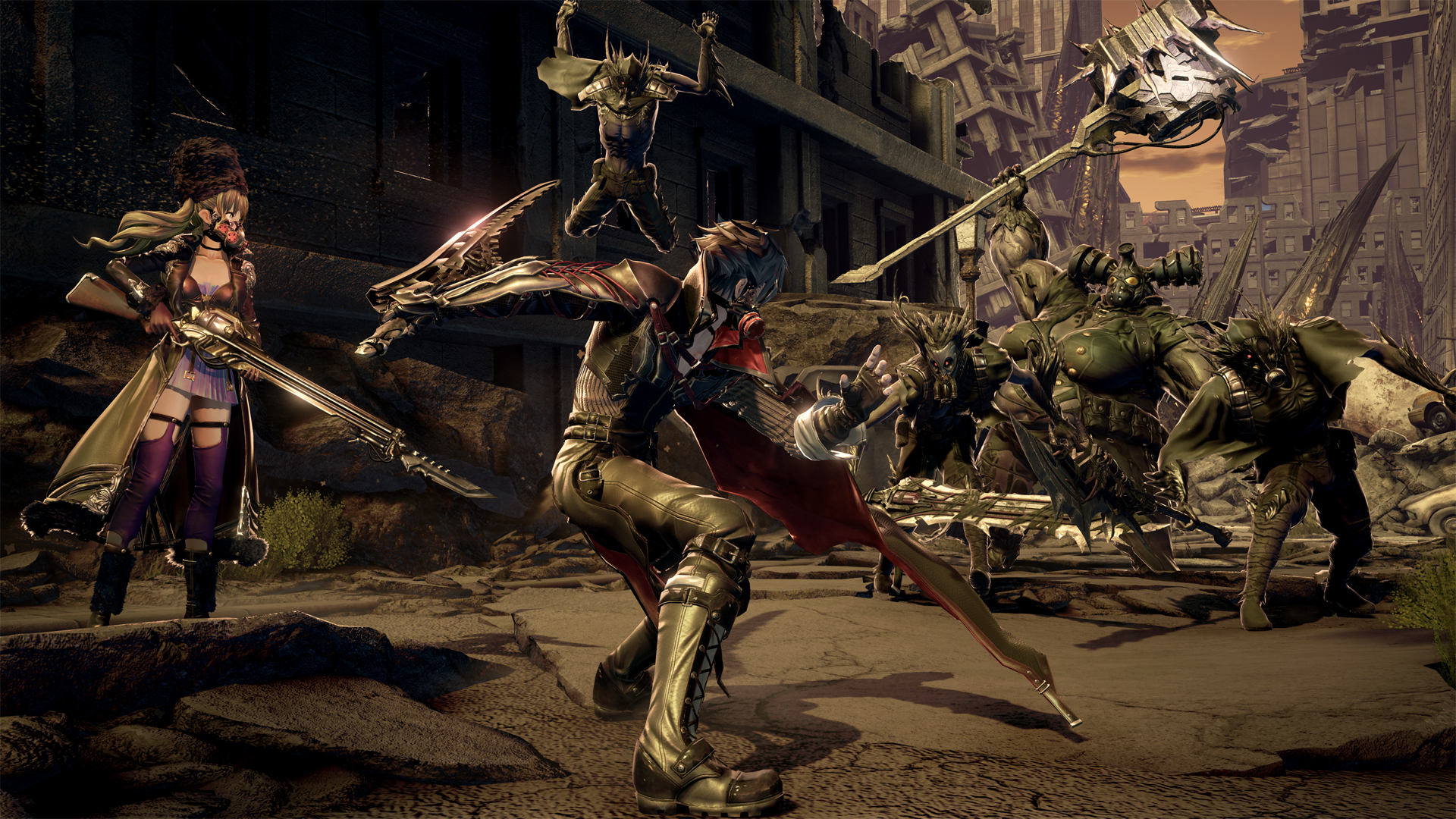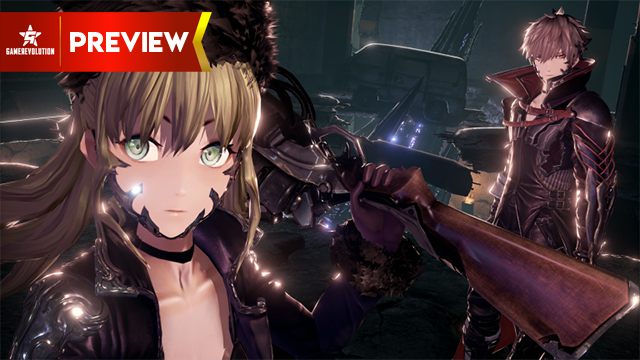You have to feel a little sorry for Bandai Namco. After changing the world with From Software and the Dark Souls trilogy, the publisher has had to watch as From left the series behind and went off to do games such as Sekiro and Bloodborne with other publishers. Code Vein is Bandai Namco’s return to the genre and it is best described as Dark Souls with vampires and anime, and anything you can imagine out of those three things is probably present and correct. And, despite its unsubtle inspirations, that might be just fine.
It takes tough gameplay, loadout consideration, and careful enemy observation from the Soulsborne games. It apes drinking blood, thralls, and transformations from vampires. And its anime inspiration is, well, everywhere else.
Code Vein Preview | Fan-pire service

It doesn’t start out well though as the intro cutscene Code Vein is incredibly off-putting. After the rather basic tutorial and character customization screen, the opening cutscene begins with a pair of scantily-clad breasts jiggling around the screen. While most characters in this opening are wearing colorful, impressive, but at least slightly practical clothes, this “mysterious girl in white” (Io, as you’re told an hour or so in) is wearing a backless, tight-fitting, strategically-ripped white cocktail dress that she mostly doesn’t fit into.
Fortunately the rest of the story seems totally fine, if a bit over-the-top (this is anime, after all). The world has collapsed, with a destructive Red Mist creating a battle royale-like circle within a city of broken skyscrapers, where the remaining population live. All the people left in the world are Revenants (vampires), and those without a steady diet of blood turn into feral monsters called the Lost, which are most of the enemies you have to face.
There’s talk of a Queen, a gang leader called Silva, some form of resistance group that you join after the first boss battle, and some guy called Oliver Collins who might as well be wearing a “I’m going to be the first to die” shirt. There’s also some weird Alice in Wonderland-like sections that are hard to make heads or tales of. These early bits only showed a slight bit of Code Vein‘s story and was at least a little intriguing, but the gameplay is probably going to be more memorable.
Code Vein Preview | Nos-From-atu

The game goes full Dark Souls once it throws you into some caverns with a pointy stick and a bunch of feral Revenants to wade through. The controls are a little different (no attack on the shoulder buttons here, all face buttons), but the feel of the game and combat is straight from From. Combat is about dodging out the way of an enemy’s attacks, observing how those attacks work, and trying to never get hit or take on more than one enemy at a time. Light weapons can give you quick hits but don’t do much damage, and while heavy weapons do a lot of damage, they can take an age to swing; a certain death wish for mashy adventurers.
The full Dark Souls feel extends to the level design, where “secret” areas and items will be hidden behind boxes or little drops off ledges, with monsters lurking ready to strike just above you or around a dark corner when your attention is on something else. There were bonfire-equivalents where you can upgrade your character with a souls-equivalent that you earn from killing enemies. These levels were also quite linear and had no evidence of shortcuts to previously-visited areas.
It still absolutely scratches the Dark Souls itch, especially in combat, although some of the bigger weapons didn’t have the expected range, even if the actual animation clearly shows the swings going through the closest enemy. This fact killed me several times, as did the annoyance that shorter enemies (like slimes) were often too low to the ground to be hit by standard attack animations or even long-range attacks. The game’s still in pre-alpha, so hopefully these things will get sorted out.
Code Vein Preview | Bram Sekiro‘s Dracula

However, Code Vein does have a few ideas that’ll help it break away from the Dark Souls-y feel it’s got going on, apart from vampires and breasts. For one, there’s a lot more of a focus on having an AI partner with you than any other Soulsborne game, complete with powers to help you heal each other. If you’re on the brink of being killed, a heal from your companion can be the most wonderful thing in the world. There’s no word yet on whether an online partner will be able to take their place, hopefully so, but if not, these companions help make Code Vein feel a bit more like an RPG. You can go pure Dark Souls and leave them in the hub, however.
It’s the system of “Blood Codes” that’s the biggest deviation from the Souls formula however, and may help elevate Code Vein from just feeling like a copycat. These are essentially the game’s take on character classes, except players can alternate between them at any time like Final Fantasy 14. The default Codes of Caster, Ranger, and Fighter are pretty self-explanatory, and these give access to different power-ups, upgrades, and affect your stats too.
You get more Codes as you defeat bosses, talk to characters, or as you buy them from the store. This includes the likes of Berserker (higher strength and endurance, but less power for abilities), Prometheus (balanced combat but fragile), Aset (ranged and ability-focused), and a lot more. You can mess around with your playstyle and abilities on the fly, and this could add a lot of depth to the game if executed correctly.
This was only a small taste of what Code Vein has in store, and it’s been a long time coming, but it’s shaping up to be a fun Dark Souls replacement, with a bit more of a focus on story. It’s certainly a bit uncomfortable just how much of the Dark Souls gameplay and design is in it, but anyone missing From’s classic series (especially if you didn’t enjoy Sekiro as much) definitely should be keeping an eye on Code Vein for the time being. It may well be fang-tastic if it coalesces into something more than the sum of its parts and irons out some of its issues.







